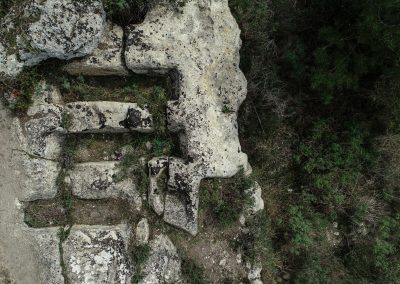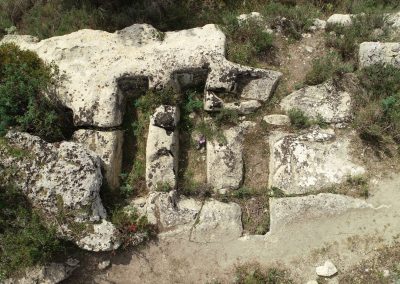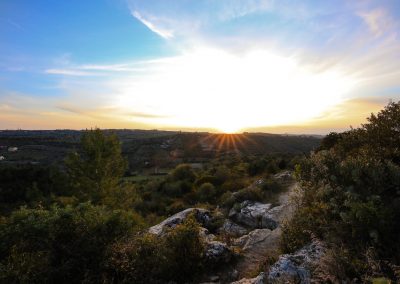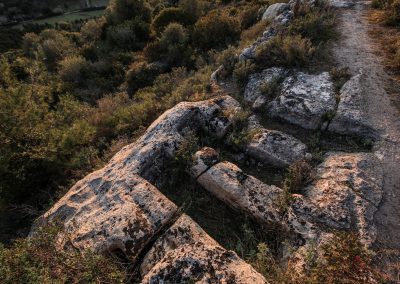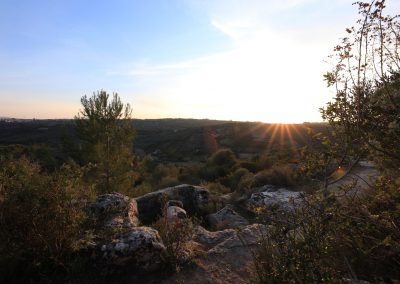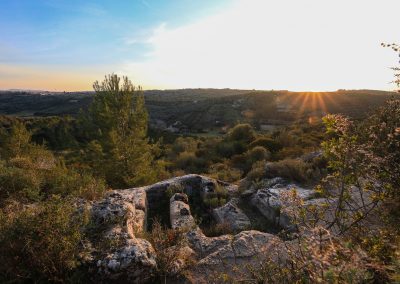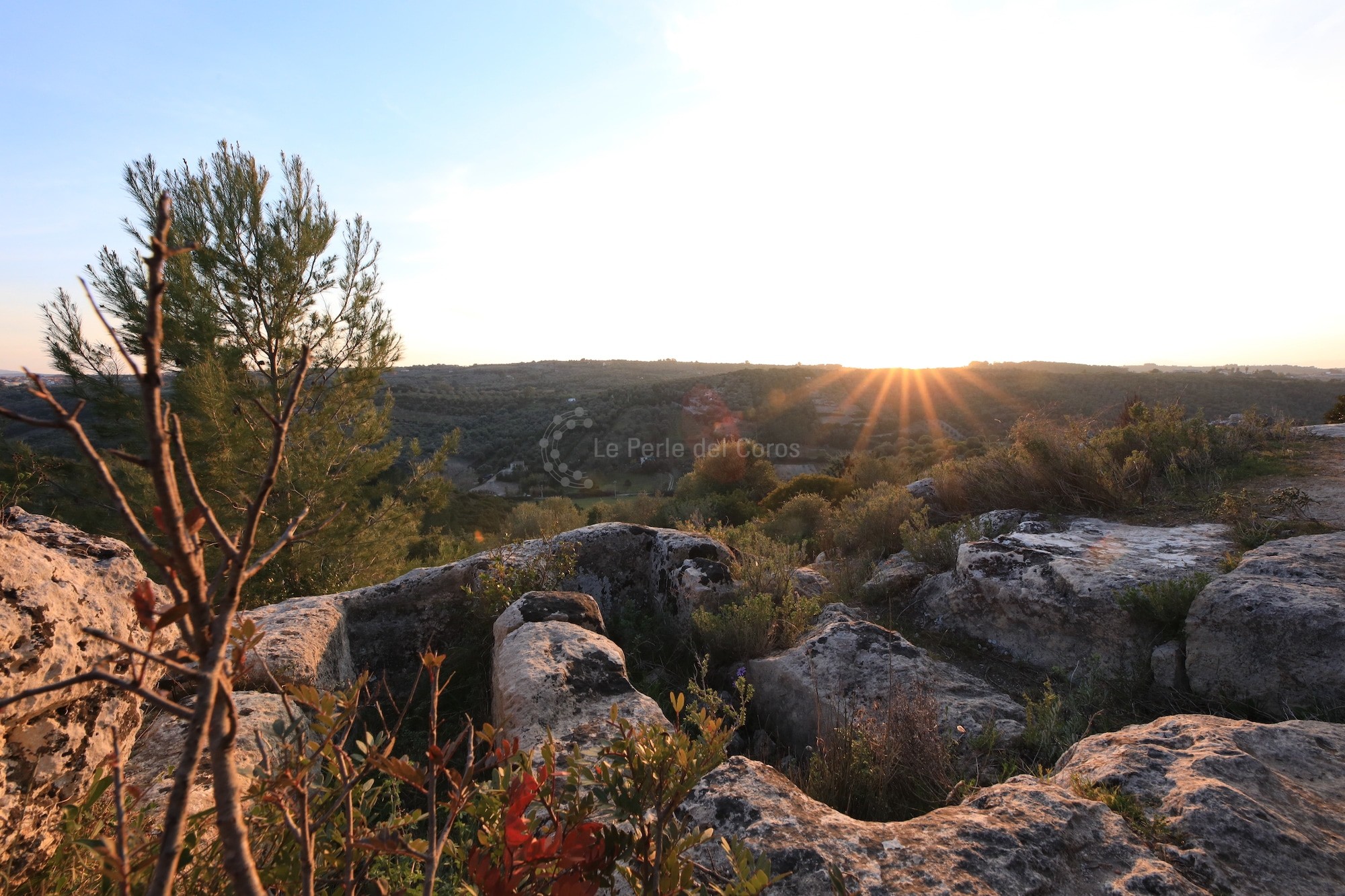
Tissi
Archaeological complex S’Attentu
The archaeological complex S’Attentu is located west from the town of Tissi, inside a vast area of about twenty hectares belonging to the Town Council, and currently subject to reforestation work. The site extends towards the western extremity of a limestone plateau, that descends south-west with steep slopes, down to the valley where there is an unconfined aquifer of considerable size. This was surely a determining factor in the positioning of the site, along with the geomorphologic aspects and proximity to the road “A Turre Karalis” (tn* ancient Roman road uniting Northern Sardinia to the south, from Porto Torres to Cagliari). On the land today, there are traces of construction, extending over at least ten-thousand square metres. At the site there are several structures, mostly quadrangular, made with big limestone blocks in sub-square pattern. These structures reach a maximum of sixty centimetres from the ground and in some cases the double wall is visible. A peculiarity of the site is the presence of wide segments of opus signinum (tn* a building material used in ancient Rome made of tiles broken up into very small pieces, mixed with mortar, and then beaten down with a rammer). This consists of a mix of lime, sand and ceramic fragments, with waterproof properties used to seal the cladding of the water baths in thermal facilities or cisterns. All of this suggests that there was one of these monumental facilities in the area. Among the materials found on the surface of the site there are many fragmented fictile artefacts (tn* pottery findings), mainly of kitchen and canteen ceramics, several grindstones and many fragments of dolia (tn* large earthenware vases or vessels used in ancient Roman times for storage or transportation of goods). The part of the archaeological area not subject to reforestation is partially indicated by pre-existing dry stone walls, but there are also traces of walls barely visible above the surface of the ground beyond the eastern fence. Along the path to access the site, about three-hundred metres north-east, there are four shaft tombs, carved in limestone: three graves are parallel and oriented on a north-south axis; while the fourth, transversal, is aligned east-west and is only partially remaining.
Source: “Tissi, The Territory from Prehistory to The Middle Ages” (in Italian), by Pina Maria Derudas

